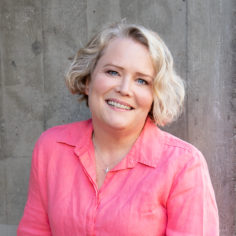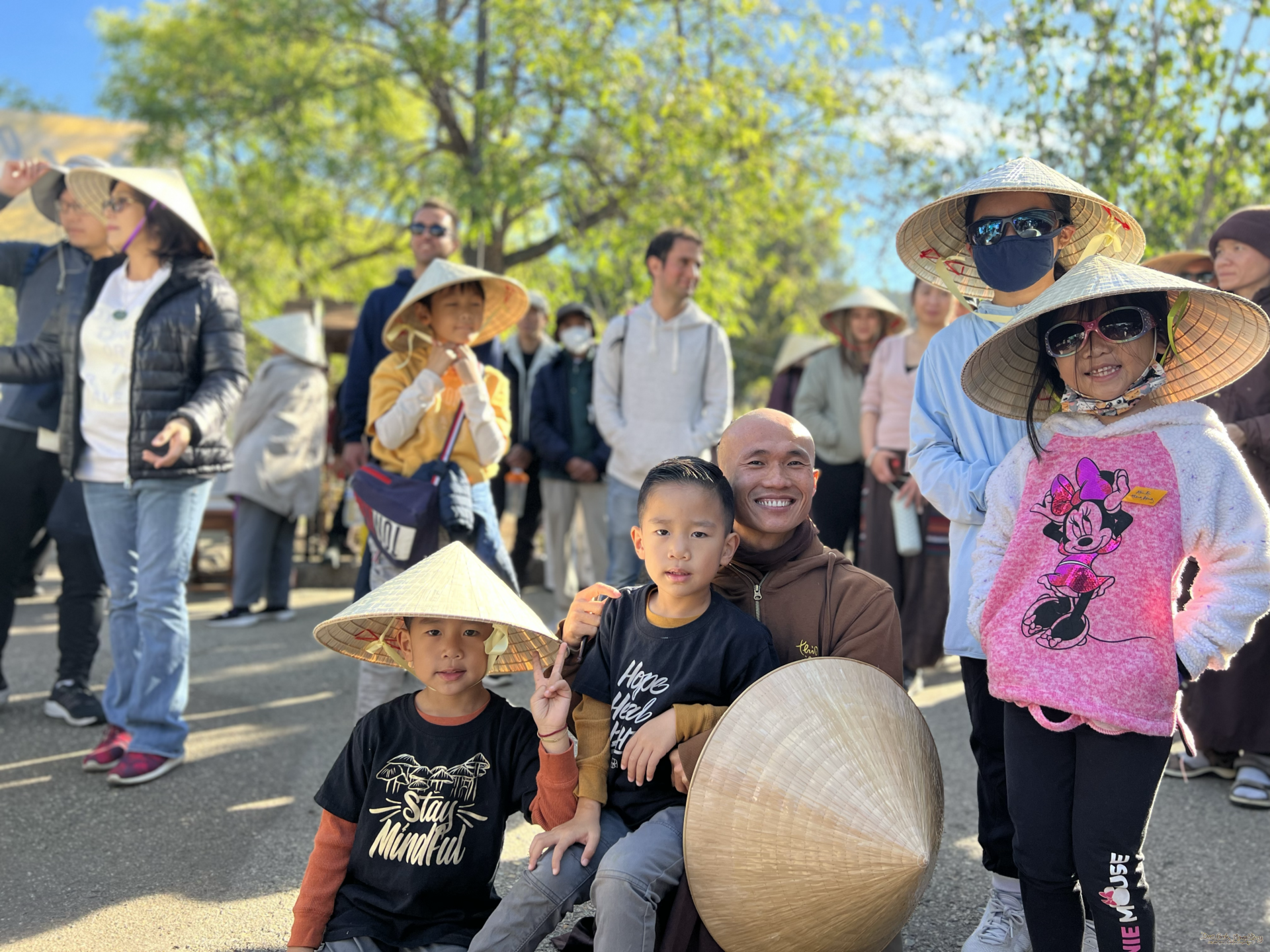By Orlaith O’Sullivan on
One definition of public health is “the science and art of preventing disease, prolonging life, and promoting health through organised efforts of society.”1
For me, Sir Donald Acheson’s definition highlights that public health is not just for everyone; it is by everyone.
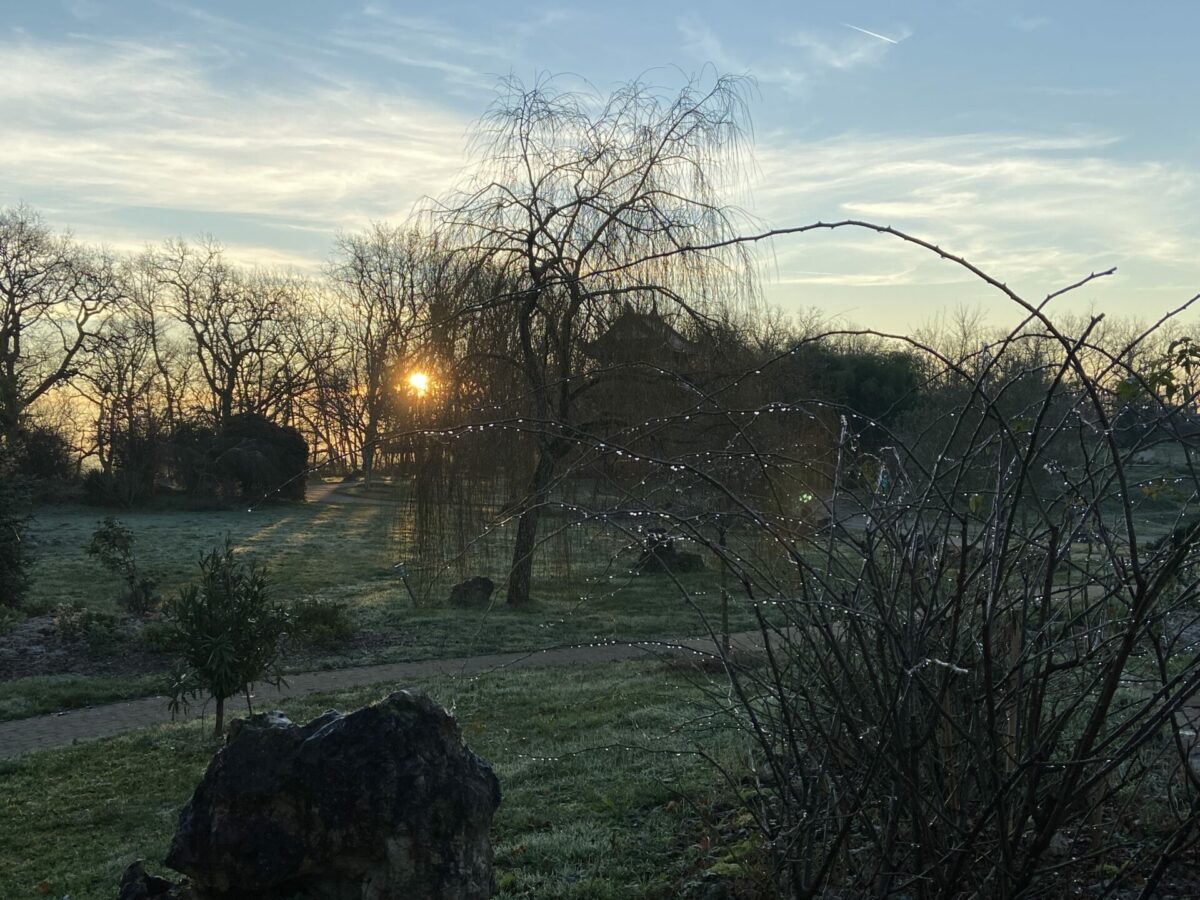
By Orlaith O'Sullivan on
One definition of public health is “the science and art of preventing disease, prolonging life, and promoting health through organised efforts of society.”1
For me, Sir Donald Acheson’s definition highlights that public health is not just for everyone; it is by everyone.

Public health is everyone’s responsibility. It is co-created. Together, we aim to manifest conditions under which humans experience a sense of collective wellness and not merely avoid disease. This definition of wellness is multifaceted, encompassing physical, mental, and social health. Today we would surely add planetary health as a fourth facet of our collective wellbeing.
Thích Nhất Hạnh catalyzed a public health movement by founding Wake Up Schools:
“Our mission as teachers is not just to transmit knowledge, but to form human beings, to construct a worthy, beautiful human race, in order to take care of our precious planet.”2
In continuing Wake Up Schools, we nurture our teacher’s aspirations and practice to realize them. We are being asked to envision a renewed, refreshed society. How can we co-create schools as refuges of wellbeing where humans of all ages can thrive in a way that benefits all beings and the planet? How can we generate sufficient hope and love to sustain us? How might we manifest the insight and wisdom needed to create schools that are places of equity and collective awakening?
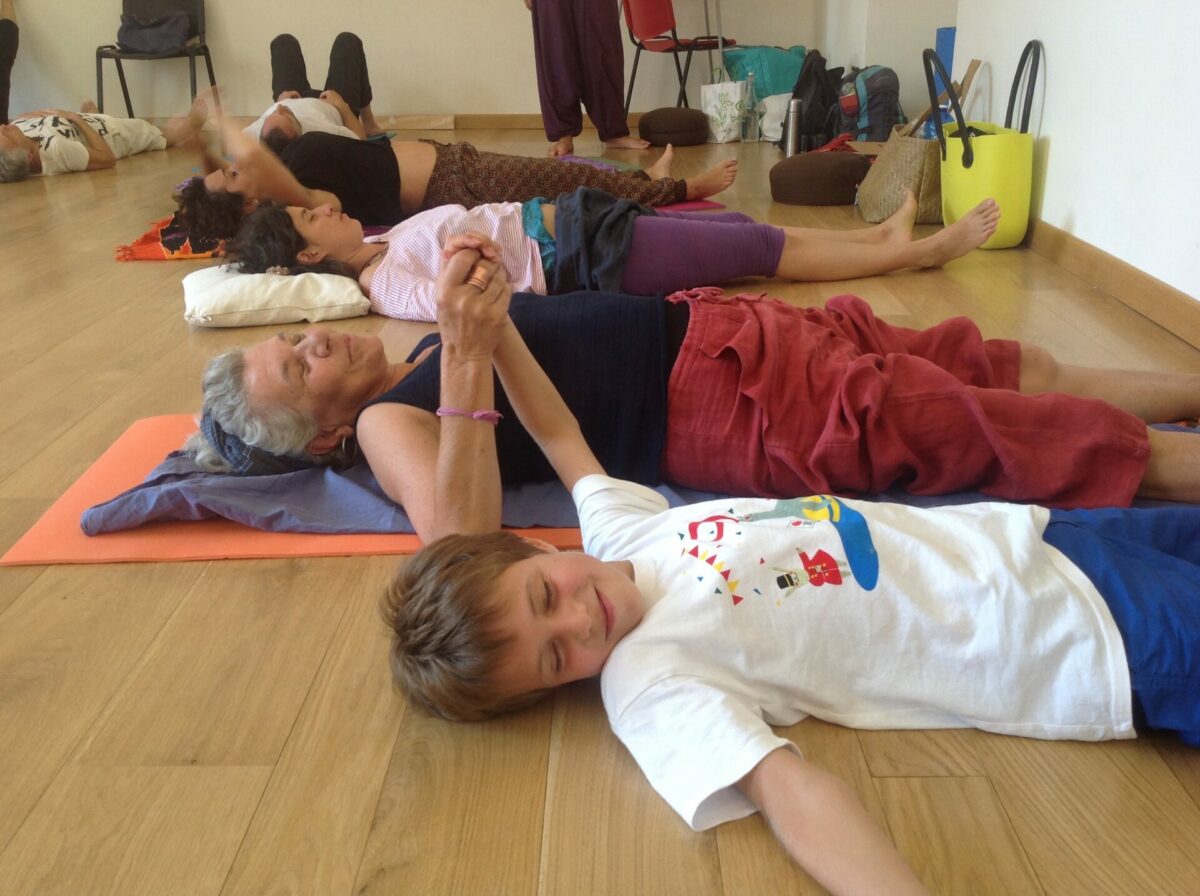
Public Health Starts with You
In his book Interbeing, Thầy reminds us, “We only teach what we practice. We teach what we have been able to realize.”3 The first pillar of Wake Up Schools is embodiment. Our own individual practice is key, as mindfulness is not an intellectual curriculum but a lived experience. Even if our volition is to help others, we need to start with ourselves.
“Collective awakening is made up of individual awakening. You have to wake yourself up first, and then those around you have a chance. When we ourselves suffer less we can be more helpful and we can help others to change themselves too. Peace, awakening, and enlightenment always begin with you. You are the one you need to count on.”4 As teachers, our path of practice is not limited by any one physical location: home, classroom, staff room, or beyond. That path is us, and so we cultivate a path that is whole and congruent. It always begins with the act of coming home to ourselves, as Thầy famously taught at a retreat for educators at Brock University in August 2013:
The first thing is to go home to ourselves. When you have enough peace, joy, and compassion, and you suffer less, you can go to your partner—the person who is closest to you—and help him or her to do the same. When you have not changed yourself, it is very difficult to help change the other person. Of course, your partner, your loved one, then has to do the same as you. You help them to go back to themselves to take care of the situation inside. You show them how to release the tension in the body; how to generate a feeling of joy or happiness; how to listen to the suffering inside and understand the suffering inside. After having helped the people in our own family, we have a stronger foundation at home—we become co-practitioners. We share the same values; we share the same spiritual practice. Because we know that each day the situation improves, there’s more peace, less suffering, more joy, and more happiness. With that foundation, we can begin to help the people in our workplace, our colleagues, and our students. The principle is very much the same: helping them to go home to themselves and take care. Within the school, first you have your class and you transform your class. Your class becomes a happier place. Your class can become like a family. Finally, with our families, our colleagues, our students, and the whole school behind us, we are stronger. Together we can take the next step and help still more people. The transformation begins to affect even the families of our students and our colleagues, and the ripples spread far and wide. But we always remember, the principle is this: the way out is in.5
By taking care of ourselves, we as teachers are already taking care of pupils. Our first and greatest teaching to our students is our true presence.
Happiness is naturally contagious
At Wake Up Schools, we encourage teachers to take their time and not rush in sharing the practice. Connecting with the second pillar of Wake Up Schools—service—we enliven our own energy of bodhicitta. This already has an effect on our environment; mindfulness begins to grow naturally within the ecosystem of our school.
We have many practices and guides that offer a practical framework of support for living happy, ethical lives. At a 2014 educators retreat in Barcelona, Spain, Thầy shared his vision of teachers practicing with The Five Mindfulness Trainings and considered the influence that such an embodied practice could wield: “A schoolteacher should embody that kind of mindful living, that kind of compassion and understanding. This will help the young generation tremendously in their transformation and healing.”6
Our experience at Wake Up Schools is that a happy teacher is love in action and is a highly contagious presence. Practicing together in our Happy Teacher Sanghas, we deepen our own practice and support each other. Thầy encouraged us in Happy Teachers Change the World: “Let’s dream about building a community among the colleagues and personnel of our institution.”6 When the time is right, a teacher knows how to support and channel the growing energy of practice within their school. Many stories of the transformative power of practices focused on building community, the third pillar of Wake Up Schools, have been shared with us. Here are two examples, also included in our book Happy Teachers Change the World:
Christiane Terrier, a high school physics and chemistry teacher and mindfulness trainer in France, shared one beautiful example of building community, the third pillar of Wake Up Schools. She described the effect of creating a space where her colleagues could be listened to deeply:
“My colleagues soon discovered that this profound listening already relieved much suffering. Many times at the quarter’s end, for example, they got really exhausted and discouraged, but they’d leave our meetings full of energy. ‘It’s helped me an awful lot,’ ‘It left me wanting more,’ ‘I leave feeling relaxed,’ they say. These benevolent spaces, where there is trust, loving speech, and solidarity, hardly ever exist in schools. Yet they offer a reassuring framework that is truly indispensable.”7
The teachers in Christiane’s school naturally wanted to share the benefits of deep listening with their students. They created a “drop your bag” listening space. This listening space was conceived of as one where the student could set down their bag and share from their heart while the teacher would remove their cap and listen—a time to be present for each other as human beings.
“The students who attended the listening space repeatedly expressed the belief that it offered them a lot. Young people who came discouraged, anxious, stressed, subject to academic and/or family pressures, went away relieved, smiling, and relaxed. This creates a real quality relationship between youth and adults. Colleagues could also see the impact of their investment on the students in their classes. Listening without discriminating even helped prevent several dropouts.”8
An educator from Spain, Carmelo Blazquez Jimenezae, worked as part of a school team practicing deep listening and loving speech for a number of years. The profound impact of these practices was discernible, even to the visiting regional director:
“Not long ago my boss, the regional director for Aldeas Infantiles SOS Cataluña, visited us and told me: ‘Every time I see the Barlovento program youngsters, I see them joyful and happy, and that is somehow the merit of your team and the good relationship you seem to have with one another.’ As a matter of fact, our educators’ team in the program has been working together for nine years; it’s the most stable team, with the least turnover in the whole Aldeas Infantiles SOS Cataluña organization. The level of conflict in the daily coexistence among the youngsters, as well as with the educators, has diminished drastically. They understand each other much better, and take care of each other more lovingly.”9
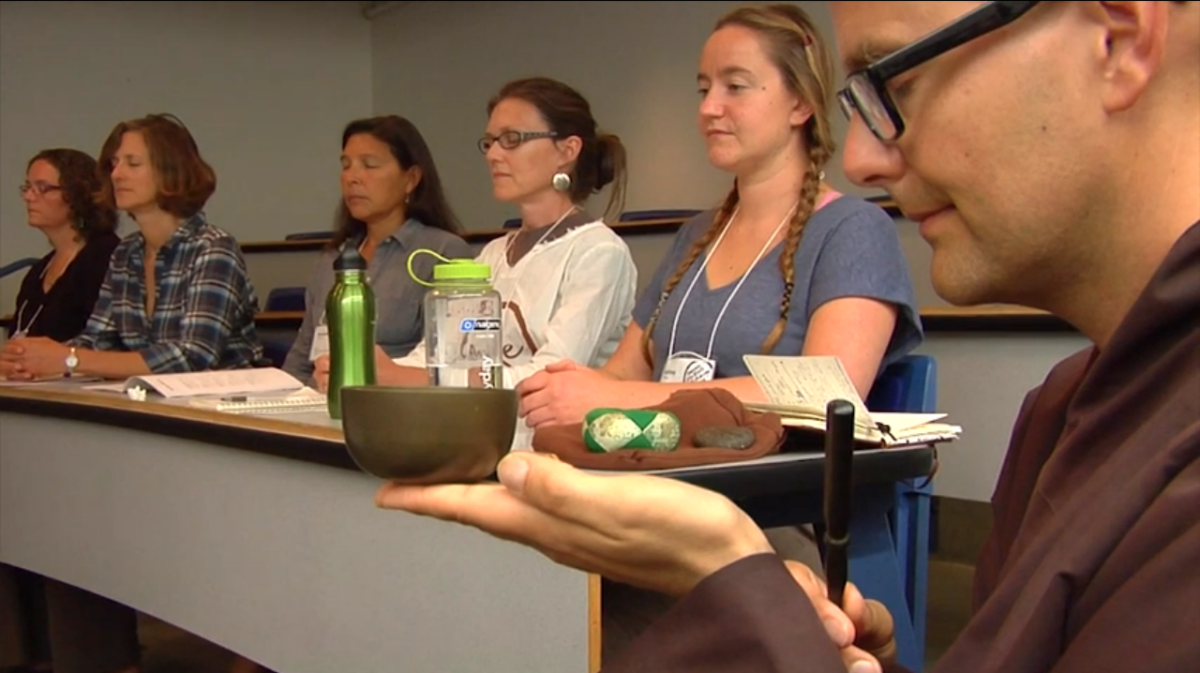
In Breathe, You Are Alive! Thầy encourages us to create different spaces to help care for our suffering: “We have to learn the art of mindful breathing, mindful living, mindful smiling, and mindfully taking care of our body. Students can set up mindfulness practice groups in their schools, because students are under stress, their bodies are under stress. Teachers are also under stress. They suffer because of their students. They can also set up a group to take care of their bodies.”10
Such transformative spaces help us to heal collectively and to live together with more happiness and understanding. “The art of handling happiness and suffering is very important. That is what we want teachers to teach in school so they may suffer less in their family, with their friends, and in their relationships with their students and colleagues, in their community, and in the world—and so they can also help their students to suffer less.”11
When we practice in this way, the practice grows beyond the confines of the school. In Happiness, Thích Nhất Hạnh offers beautiful examples of students practicing before school to “start the day with peace, serenity, and solidity”:
“So each morning when the child wakes up, have him decide to make that day the most important day. Before he goes off to school, tell him to sit or lie down, breathe slowly in and out for a few minutes, enjoy his in-breath, enjoy his out-breath, and smile. He is here. He is content. He is peaceful. This is a wonderful way to begin a day.”12
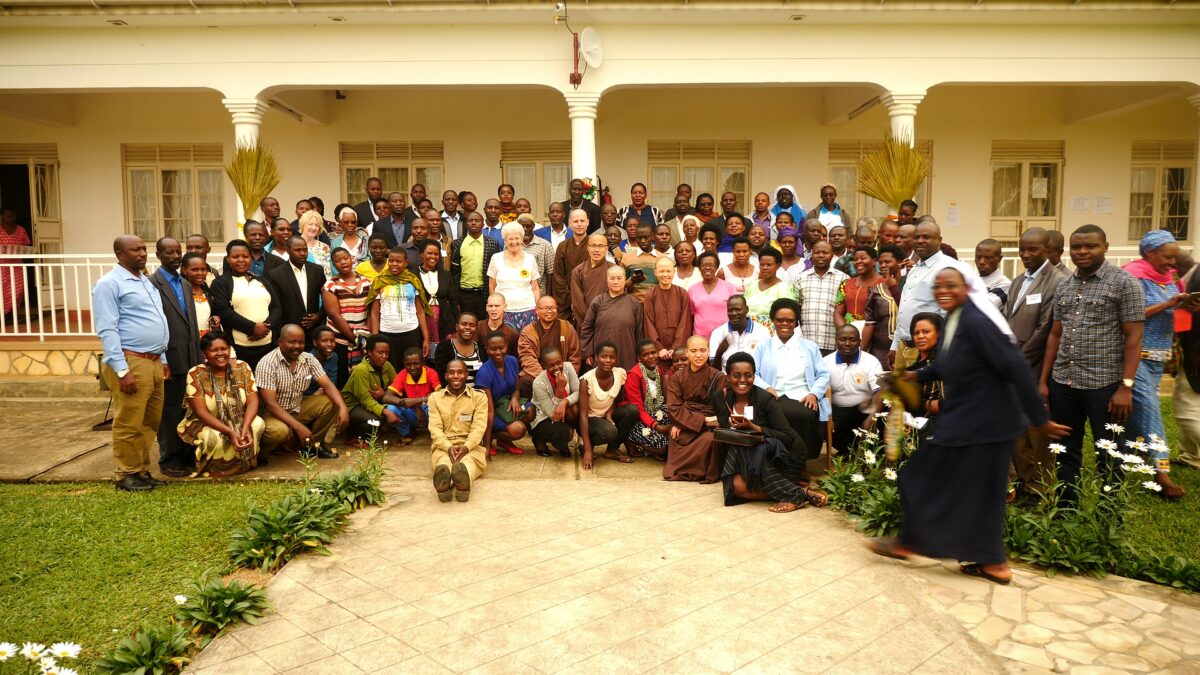
When students have their own embodied practice, their presence becomes contagious. Pediatrician and mindfulness trainer Dzung Vo describes a moment in a school in Canada:
“I saw the fruits of the practice come alive one day when, during our weekly check-in, a teenager shared this story: ‘I came home one day from school, and I was really stressed and pissed off. Then, my dad told me to do something that pissed me off even more. But instead of yelling at him, I just breathed, and then I went to my room to do some meditation. My dad saw me do that, and followed me in, and sat down beside me and meditated with me. By the time we were done, we both felt better, and then we ended up having a great evening together.’”13
Co-creating schools as places to enjoy life
Early research into mindfulness practice in schools focused on the benefits it brings in improving academic outcomes, increasing student focus, and reducing detention hours. During the 21 Day Retreat in 2014, Thầy challenged us to reflect on more profound benefits:
“What’s the use of learning if that learning doesn’t bring you happiness? The practice of right mindfulness can bring about a deep change both in the classroom and the wider education system, so we can educate people in such a way that they can be truly happy. If, while doing so, the students can learn more easily and quickly, and educators can avoid burning out, that is also wonderful.”14
One middle-high school teacher in Spain described the joyful change brought about by a Wednesday morning staff mindfulness breakfast:
“On Wednesdays I wake up in a different mood, with a kind of special joy; the first thing I do is remind my teammates that we have an appointment for mindful breakfast. When it’s time, I walk to the mindfulness room we have in our institute, and I feel thankful for dedicating this time for myself, nourishing myself, and giving my best to my students. When I enter this room I can feel the love with which my friend has prepared the place. I sit and I connect with my breathing, other colleagues walk in, and we silently nourish each other.
I am now a frequent participant in our Wednesday gatherings. It’s a moment to stop, coming back to ourselves, to reconstruct our inner being on a day that I have many classes. It is also a moment for feeling the silent links we share with those from different approaches. It’s a moment I really love.
After these meetings, our classes have a different quality. They are nourished by our conscious dedication and our refreshed energy.”15
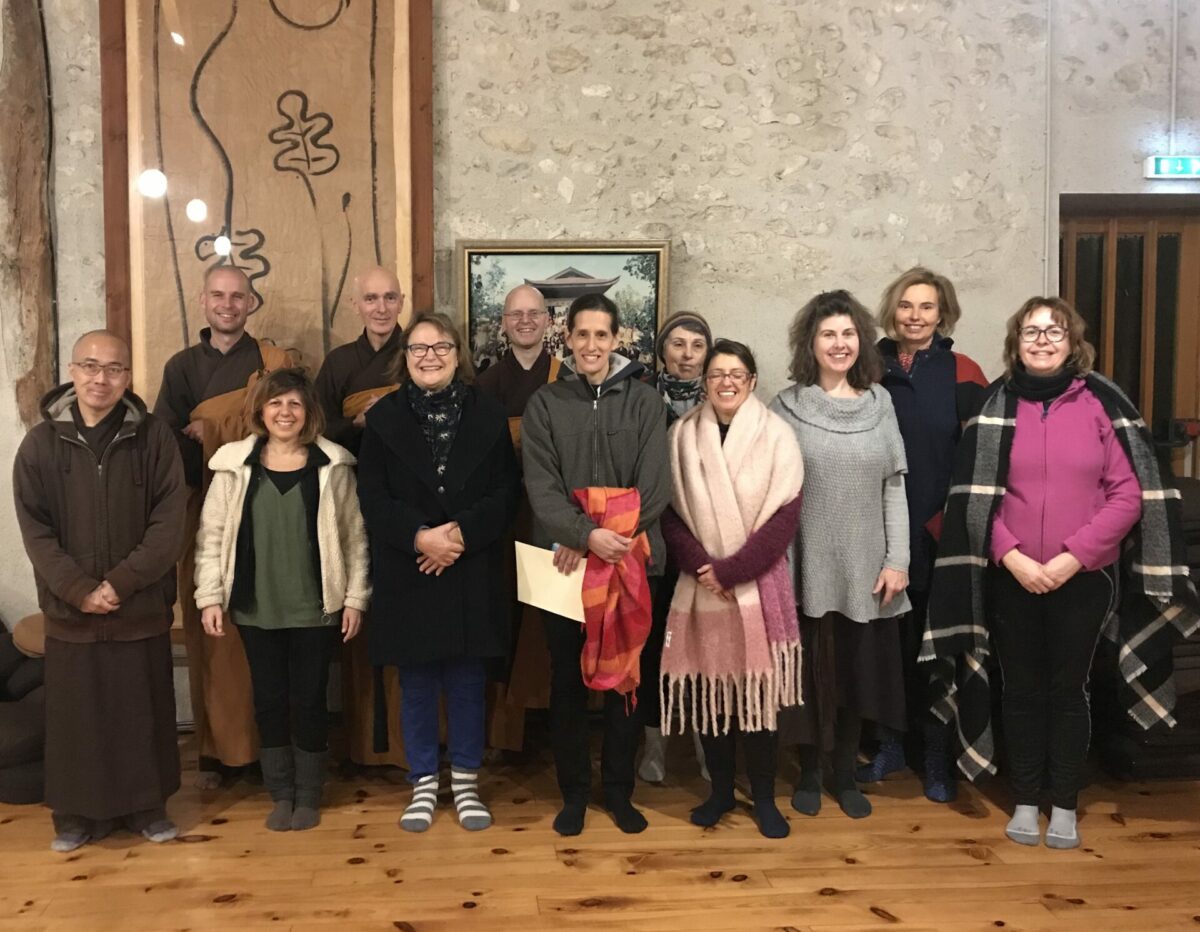
Together, we can co-create schools where both students and staff live as members of happy communities, as Thầy Pháp Dung articulates:
“What we are really trying to do is to make a school become a second family where the teacher, the students, and the whole school—the parents as well—see it as a joint effort; a joint effort to create a place where it’s not about the future, about your career, job, position, or your money, but a place where you actually enjoy living and enjoy learning, and enjoy exploring.”16
A school is a formation
In Love Letter to the Earth Thầy writes, “When we look into a flower, we can see that it’s made of many different elements, so we also call it a formation. A flower is made of many non-flower elements. The entire universe can be seen in a flower. If we look deeply into the flower, we can see the sun, the soil, the rain, and the gardener.”17
We can see that our schools and our pupils are the culmination of many factors. When we meet a pupil, we meet not only that student but all of their ancestors, their collective habit energies, their vast wisdom, their joys, and their trauma. The pupil is a formation, an event that is unfolding in this moment. Thầy says, “The job of educators is to create a situation that helps them [pupils] touch the healthy, healing elements inside and around them.”18 As educators, we aim to support the continuation of the very best in our pupils. We inter-are with every pupil and member of staff. Our school is also in us, in every cell.
The insight of interbeing also helps us to remain steady in our practice and walk this path without rushing or becoming overwhelmed. In Zen and the Art of Saving the Planet, Thầy teaches, “It is possible to train ourselves to see and experience the present moment in a deeper way. And once we touch reality deeply in the present moment, we touch the past, we touch the future, and we touch eternity.”19 Times and truths inter-are, as the third Dharma seal of Plum Village sets out. When we experience the spaciousness that comes from touching the ultimate dimension, we can help our pupils by offering teachings that can lead to true freedom. As Master Linji said, “My aim is not to give you knowledge. My aim is to help you break free from your views.”20
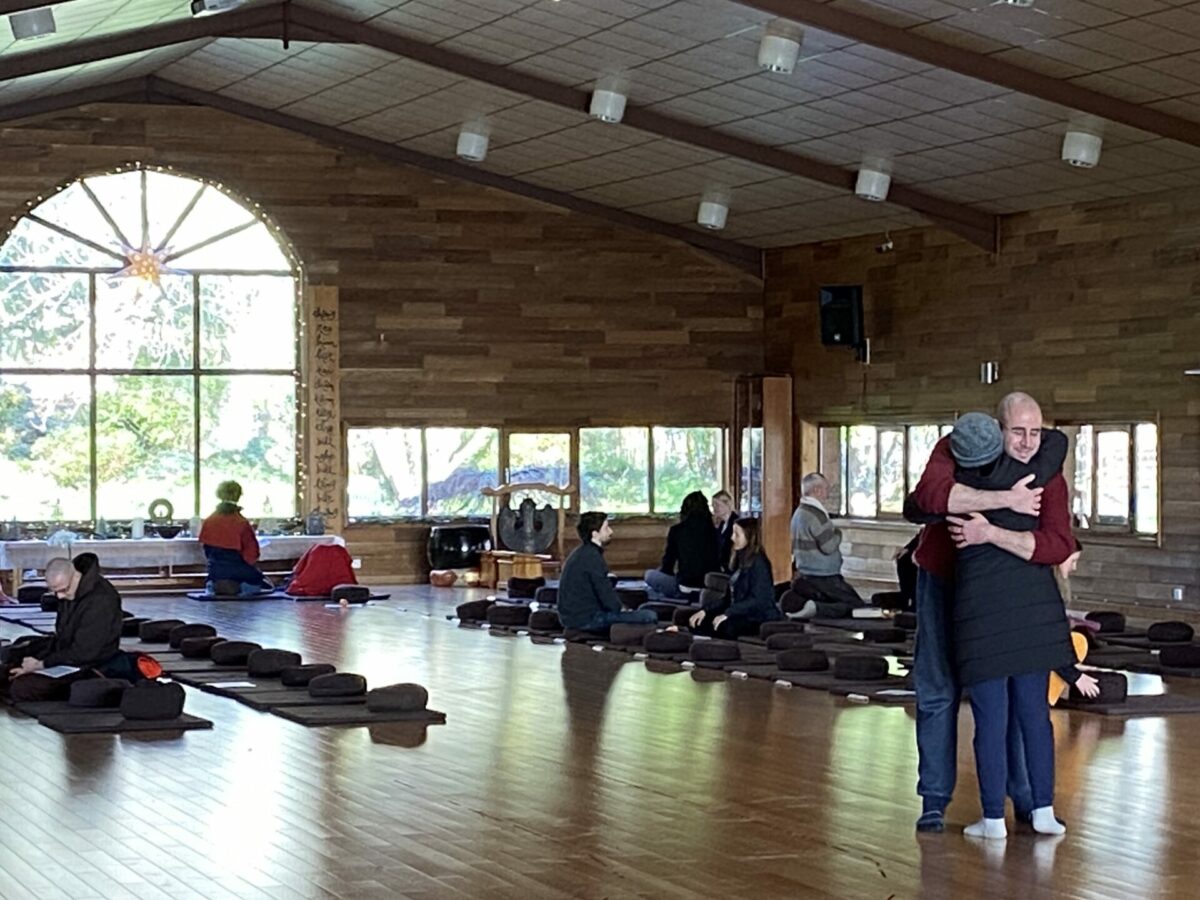
How can a school become a spiritual homeland?
We know that we have many views to break free from. Surviving as a human species necessitates a radical shift in our understanding and actions. How can our schools be a place that wakes us up from our illusion of separation? How can our schools be abodes of unconditional love? In The Sun My Heart, Thầy encourages us to envision schools as places of belonging illuminated by the sunlight of awareness, as places “where each feature of the landscape, the sound of the bell, and even the buildings are designed to remind us to return to awareness. […] The people who live there should emanate peace and freshness, the fruits of living in awareness.”21
Reenvisioning education in such a transformative way may seem daunting! But we are not alone. We know that the next Buddha may be a community, and the collective aspiration we share in walking this path together generates a dynamic energy. Together, we can manifest an energy powerful enough to take compassionate action without being overwhelmed by fear or anger.
The global ecological crisis is touching seeds of suffering and despair in the hearts of young people (and hearts of all ages). As a community, we can practice together to care for our suffering and to strengthen our hearts. In Love Letter to the Earth, Thầy speaks about how collective energy helps our practice to become “more joyful, more relaxed, and steady”:
“While the energy of our thoughts, speech, and actions is powerful, this energy is infinitely more powerful when we join together with others. When we come together as a group with a common purpose and commitment to mindful action, we produce an energy of collective concentration far superior to our own individual concentration. [...]
This collective energy can lead to collective insight and to a collective awakening.”22
The Earth is also part of our school’s collective energy. We can invite our planet to be a member of our school advisory board, to be present at every meeting, and help guide our deepest aspirations with her wisdom and insight. We can look to the Earth for inspiration, emulating her stability, creativity, and nondiscrimination in our classrooms.
We can also reflect deeply on the physical nourishment we enjoy at school and the effect it has on our planetary health. The ground-breaking EAT-Lancet Commission convened thirty-seven leading scientists from sixteen countries to develop a planetary health diet for ten billion people by 2050. The Commission’s report describes food as “the strongest single lever to optimize human health and environmental sustainability on Earth.”23 It calls for a radical transformation of the global food production system, concluding that it “constitutes the single largest driver of environmental degradation and transgression of planetary boundaries.”24 Transforming this production system by 2050 calls for a major dietary shift that would benefit both individual and environmental health: “Global consumption of fruits, vegetables, nuts and legumes will have to double, and consumption of foods such as red meat and sugar will have to be reduced by more than 50 percent.”
Schools have a vital role to play in this global effort. As Thầy shares in Love Letter to the Earth, “Our collective compassion, mindfulness, and concentration nourishes us, but it also can help to reestablish the Earth’s equilibrium and restore balance. Together, we can bring about real transformation for ourselves and for the world.”25
“Real community,” Thầy tells us, “built with our practice of mindfulness, enables us to act together.”26 In each step on the path of Wake Up Schools, we draw on our three pillars—embodiment, service, and community. We are heartened by the great blossoming of the Wake Up Schools community, which includes several new sanghas and many new practitioners worldwide. In Breathe, You Are Alive! Thầy teaches us, “Now is not the time for us to meditate as sole practitioners; we have to practice meditation as groups, cities, and nations. Our collective insight comes from individual insight, and vice versa. We practice on both levels so that we will know what to do and what not to do on the individual, familial, and national levels. Mindfulness is our instrument. Without mindfulness, negative things will continue to take place everywhere. Awareness helps us know which actions to stop and which to continue.”27
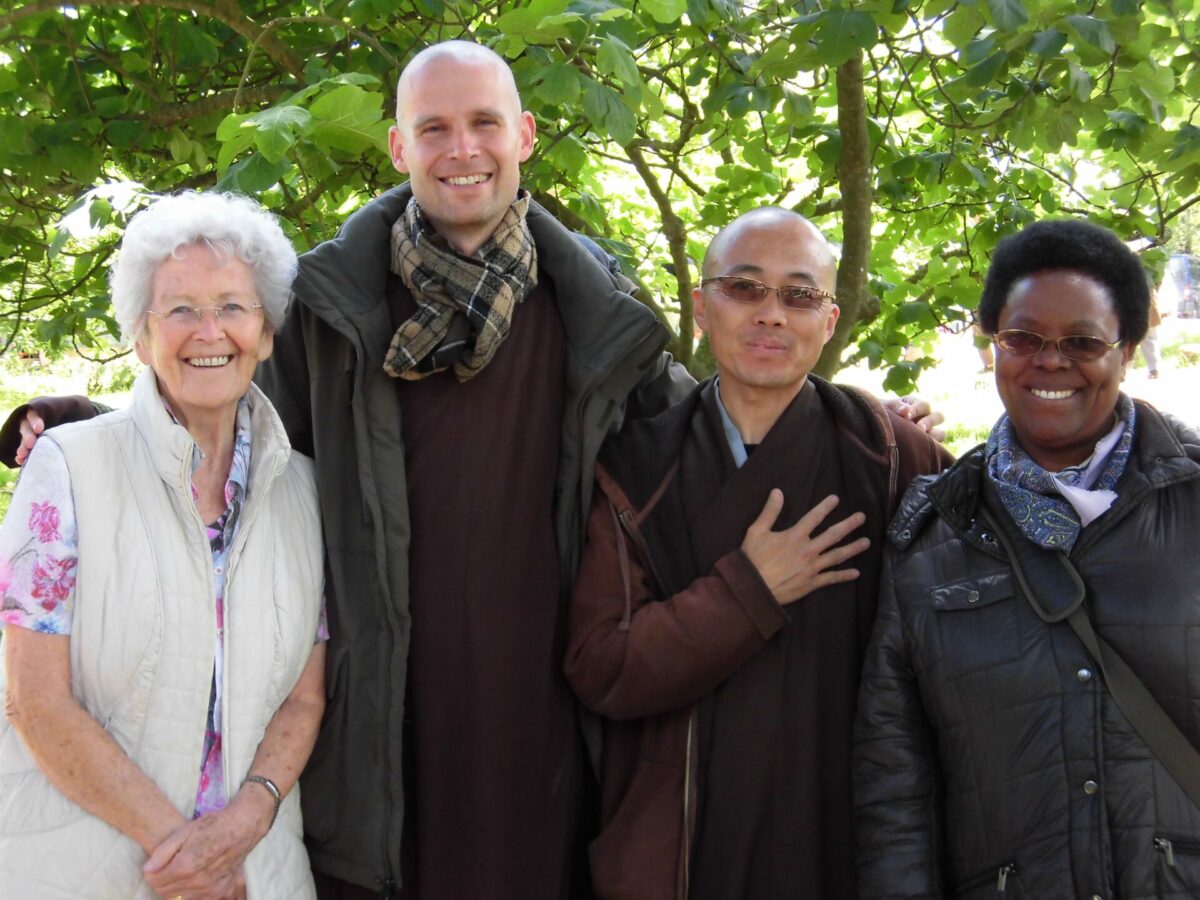
We have received Thầy’s vision for our schools as peaceful and joyful bodhisattva communities: “The action dimension is the realm of the bodhisattvas, the kind of energy that helps us bring the ultimate into the historical so we can live our life of action in a relaxing and joyful way, free from fear, free from stress, free from despair. Every one of us should be a bodhisattva, bringing the ultimate dimension into the present moment so we can arrive and stop running, so we can be relaxed and joyful, so we can make peace and enjoyment possible for humankind and for other species on Earth.”28
The school is in us. The Earth is in us. Thầy is in us. Together we can collectively generate the energies of peace, joy, and understanding, which can help us take wise action–for our health and for our planetary health. May we continue our teacher’s vision together, skilfully and beautifully:
“A child who finds himself or herself with a group of people in school who can generate the energy of love and understanding will have more chance to transform his or her suffering. A collective energy of peace, generated by mindfulness, is the answer.”29
1 Donald Acheson, Public health in England: the report of the Committee of Inquiry into the Future Development of the Public Health Function (London: The Stationary Office, 1988), p.1. https://wellcomecollection.org/works/wa4arbxy
2 Thích Nhất Hạnh and Katherine Weare, Happy Teachers Change the World (Berkeley, CA: Parallax Press, 2017), pp. xvii (Letter to a Young Teacher).
3 Thích Nhất Hạnh, Interbeing: The 14 Mindfulness Trainings of Engaged Buddhism (Berkeley, CA: Parallax Press, 2020), p. 64.
4 Thích Nhất Hạnh, Zen and the Art of Saving the Planet (New York, NY: HarperOne, 2021), p. 12.
5 https://www.youtube.com/watch?v=8PKbMf4FgPk
6 Happy Teachers Change the World, p. xxiv.
7 Happy Teachers Change the World, p. 269.
8 Happy Teachers Change the World, p. 185.
9 Happy Teachers Change the World, p. 280-1.
10 Thích Nhất Hạnh, Breathe, You Are Alive! (Berkeley, CA: Parallax Press, 2008), p. 62.
11 Happy Teachers Change the World, p. xxii.
12 Thích Nhất Hạnh, Happiness: Essential Mindfulness Practices (Berkeley, CA: Parallax Press, 2005), p. 210.
13 Happy Teachers Change the World, pp. 276.
14 Happy Teachers Change the World, pp. xviii (preface).
15 Happy Teachers Change the World, pp. 271.
16 Happy Teachers Change the World, pp. 261-2.
17 Thích Nhất Hạnh, Love Letter to the Earth, (Berkeley, CA: Parallax Press, 2013), p. 7.
18 Breathe, You Are Alive!, p. 102.
19 Zen and the Art of Saving the Planet, p. 14. https://plumvillage.app/zen-and-the-art-of-saving-the-planet/
20 Zen and the Art of Saving the Planet, p. 17.
21 Thích Nhất Hạnh, The Sun My Heart: The Companion to The Miracle of Mindfulness (Berkeley, CA: Parallax Press, 2020), p. 55.
22 Love Letter to the Earth, p. 58.
23 Summary Report of the EAT-Lancet Commission, p. 5. https://eatforum.org/eat-lancet-commission/
24 Summary Report of the EAT-Lancet Commission, p. 19.
25 Summary Report of the EAT-Lancet Commission, p. 3.
26 Love Letter to the Earth, p. 62-3.
27 Breathe, You Are Alive!, p. 105.
28 Zen and the Art of Saving the Planet, p. 77.
29 Happy Teachers Change the World, p. 43.
